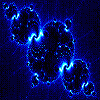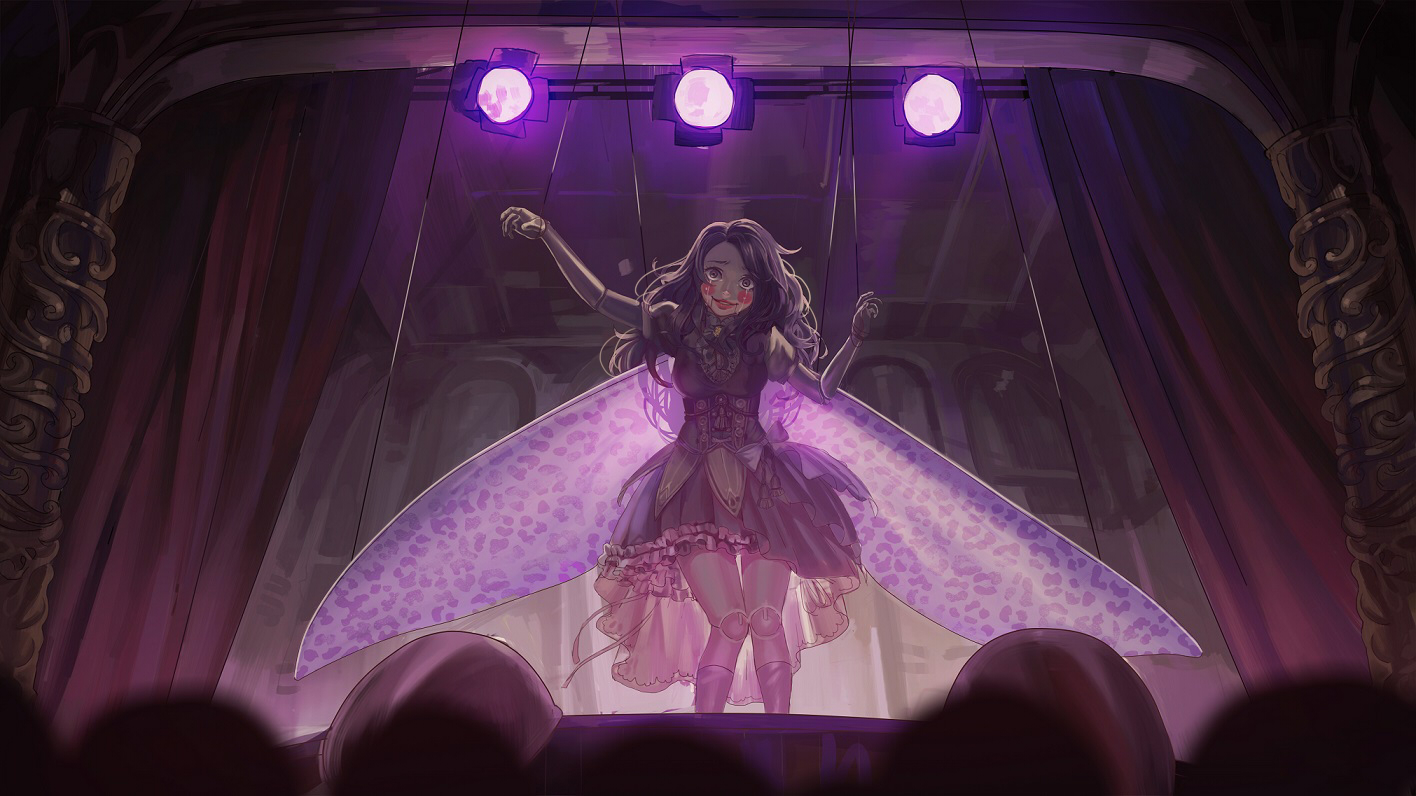Question Exemplars
- Wordsmith
-
 Topic Author
Topic Author
In addition to getting that chart back and posted in the WU sections would it also be possible to get a list of what kind of punishment each level of exemplardom is capable of shrugging off/ignoring? For example: Exemplar 1s are tough enough that common knife blades break on their skin, exemplar 2s are bullet resistant to .38 caliber bullets, Exemplar 6s can ignore main battle tank cannon fire, etc.
Also: how likely is it per ratings bump to be affected by GSD or other "defects" such as Diedrick's Syndrome?
- Valentine
-

Parkour Jam Hooligans wrote: Erik thought back. “Breaker lasted fifteen minutes the first time.” He chuckled as Anna’s eyes went wide. “Exemplar 5 strong doesn’t mean you know how to use that strength properly. It’s why there’s two different measuring sticks for Exemplars, one before puberty, and one after.”
“Huh?”
Erik chuckled and led her over a ways and explained. “Look, when you’re an Exemplar at fourteen or fifteen you may be able to outpower, out-tough and out-speed any normal adult, but you still don’t have the whole development thing done. Bones are still softer, you’re still growing, and you really only know the bare-bones basics of how to use what strength you have.”
“I’m an Avatar, not an Exemplar though.”
“Doesn’t matter, same principle applies.” Erik pointed at Slapdash in the distance. “Slappy there is rated Exemplar 3, and he can deadlift about eight hundred pounds. That’s whole-body lifting. Once his bones fully harden he’ll actually hit that point where EX-3’s are at superhuman levels. The docs won’t be measuring his deadlift, he’ll be bench-pressing those eight-hundred pounds. Zenith and Breaker can both send a car into cartwheels, but they both started only being able to flip ‘em over on their side.
“So to be considered an Exemplar 5 as a kid you have to be able to lift a ton, but you gotta be able to bench-press the same as an adult?”
“Yep, it’s a bit more involved, but that’s the quick and dirty.” Erik looked over. “You, from what I’m seeing are very likely to be a daredevil type around your junior year, once you’ve hit past sixteen.”
The numbers are the same, the type of lift is different.
Don't Drick and Drive.
- Kristin Darken
-

Rank 0 - The mutant exhibits some of the precursor abilities commonly associated with the trait but doesn't actually express the trait in a usable way.
Rank 1 - The mutant exhibits the trait in its simplest, most limited expression. Rank 1 traits are generally natural progression evolutionary steps and while they may provide the mutant with new means of going about their lives, they rarely do so in ways that couldn't also be done through advanced training/experience. Or in another way. Both baseline PSI and Mages are good examples of this... decades of skill allowing them to achieve feats of psychic ability or essence manipulation at a level that rank 1 mutants of the appropriate type can acquire with the slightest understanding of their abilities.
Rank 2 - The mutant trait is expressed at a level that is considered to be the fullest expression of the human genetic code. Rank 2 traits are most easily explained in comparison to the physical... the mutant inherently capable of performing on par with the best baseline specialists in every area, without need for significant training or understanding of the advanced techniques of the skill set. A rank 2 exemplar, for instance is simultaneously as strong, as fast, as agile, as intelligent, as witty, and has the endurance and willpower to sustain such things as a world class / Olympic athlete. A baseline gold medalist sprinter might, on a good day, beat the rank 2 Exemplar in a sprint putting the Exemplar in silver. However, the Exemplar could then go on a place if not win other races, field events, swimming, lifting, wrestling, and so on... while the sprinter would have no chance of competing outside of running. The expression of rank 2 traits rarely shows anything in the physical body's development that is non-human.
Rank 3 - This is the point at which mutant traits allow for superhuman actions, the realm of which is typically (historically) entered only through moments of heroic action... the mother who shifts the tree or automobile to protect her child, for instance. Unlike such spontaneous events, however, some unique evolutionary difference in the body allows the mutant the ability to consistently act in ways that are a step above what is possible even by trained world class baselines. A bad-ass normal might beat a rank 2 mutant one on one in a contest of ability... of limited scope. A bad-ass normal will only beat someone of rank 3+ using specially designed techniques that the mutant is unable to counter (by knowledge or will). A rank 3 mutant will be different from a human when it comes to basic anatomy/physiology, whether it is increased density tissue in muscles or skin, more responsive nervous systems, or completely new organ types; these differences are necessary to achieve the advantages over a baseline.
Ranks 4-6 - Each stage at this point is a further degree distant from the contemporary human baseline. It should be noted that most ranks, if evaluating a measurable scale of ability, tend to overlap the value of the ranks both below and above them... but are completely outside the ability to compete with the rank two above them (just as they are completely beyond the ability of the rank two below them). For example, if you lined up a bunch of rank 2 Exemplar of varying skill and performance level and had them complete with a rank 3, one or more of them might actually beat the rank 3 if the rank 3 was having an off day or was distracted. But none of them would come close to a rank 4 Exemplar. Similarly, a couple rank 4 Exemplar might out lift a rank 5 Exemplar who spends most of their time pushing speed and agility, but a rank 6 might out lift the 4's WHILE trying to outrun the 5.
Rank 7 - Rank 7 is a false rank. The scale actually ends at 6. However, an occasional unique mutation occurs in a way that doesn't fit the standard classifications for a given trait. As a result, that mutant can often do things that most of the others with the same trait cannot (those things aren't always 'higher on a scale', just different or unique). As a result, those mutants are classed at rank 7. This generally means 'consider them as strong as a six but be ready to adapt because they don't have the normal limitations'.
It's important to note that the ranks are not assigned based on the mutant showing an ability within the scale defined by that rank. Instead, for instance, a mutant whose bone strength and flexibility is increased due to an evolutionary change that replaces the calcium matrix with an alloy superstructure containing exotic metals... is an evolutionary change far enough from baseline that it is indicates rank 5. Rank 4's only have bones protected from the greater muscle tension/strain via a superdense layer under the normal bone surface. And rank 6 doesn't have 'bones' or a skeleton in the normal human fashion at all, the entire 'muscle' tension system independently holds the body shape without a need for a 'solid' superstructure that could be broken at all.
Or something like that.
However, certain evolutionary adaptations tend to provide quantifiable 'boosts' to the body's other measurable abilities... so, for certain types of bone and muscle evolutions; you can expect the mutant to be X times stronger than a baseline of the same size/build which leads to a measurable 'lift' weight.
Fate guard you and grant you a Light to brighten your Way.
- Kristin Darken
-

This is why understanding where ranking comes from that matters. Knowing that a mutant is evolving in a certain way classes them as a rank X... which lets you predict that they'll probably be able, for example, to lift a half ton. Obviously, if they haven't finished growing, they aren't going to be performing at full capability... but the rank isn't going to change just because at manifestation they can only lift 300 pounds but will be able to lift 1000 eventually... so there are 'false scales' like that. Ya, you can't toss around 1000 lbs right this second... but the fact that you can push 1000 lbs in the ideal set up on the machine using the strongest muscles you currently have.... means its really likely that once you are fully grown that you'll do so someday.
So the fact that you lift 300 lbs now and 1k fully developed doesn't mean your rank changed or that a specific rank scales from 300-1000.
Also, base body type/build matters. If you manifest at 4'5" 63 lbs... and fully developed, you are 6'2" 325 lbs in perfect heroic proportions... that impacts what you can lift (leverage, muscle size/shape, etc). And a rank 4 exemplar that is fully developed at 6'2" 325 and one who is 5'1" 90 lbs... are likely to place 'on the scale' how you might expect from their sizes... the much larger built mutant is going to lift more. Maybe not a lot more... but the smaller mutant is going to have to have more evolutionary steps to get the same absolute lift result... and if its too many more, they move from rank 4 up to rank 5. And that's why the adjacent ranks overlap on the 'scales' but alternating ranks are exponential jumps. Once you start combining the more advanced evolutionary steps, they're a significant multiplier.
Fate guard you and grant you a Light to brighten your Way.
- dbdatvic
-

Dave
[*] (you are a Power, an archetype of a concept, like Magnetism or Money or Music; you work for an Imperator, essentially an animate piece of the underlying reality of the world; mundane reality is actually a cover story 'told' by the cosmos as a layer of protection; and there's been a war on with Excrucians, from outside Creation entirely, for two Ages of the World now - they want to free us from the lie that is reality, and generally do so by attacking one or another concept with the aim of removing it entirely from the world. It's a very social-oriented game, no dice at all, but has many Moments of Inherent Awesome)

